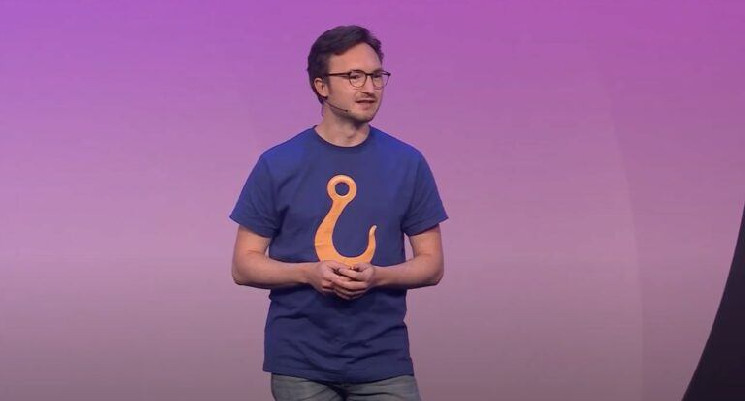Wietse Wind on the Power and Potential of XRP Ledger (XRPL)
 cryptoglobe.com 16 July 2024 19:59, UTC
cryptoglobe.com 16 July 2024 19:59, UTC In a presentation at the recent XRP Ledger Apex event, Wietse Wind, Founder of XRPL Labs, shared his insights and vision for the future of blockchain technology, mainly focusing on the XRPL (XRP Ledger). The title of Wind’s talk, “The Blockchain No One Knows About,” possibly carries a dual meaning.
Firstly, it reflects the current reality that the XRP Ledger (XRPL) is not as well-known or widely recognized as other blockchain technologies despite its powerful capabilities and unique features. Wind highlighted the XRPL’s ease of use, standardized API, native decentralized exchange, and innovative features like pull payments and key recovery mechanisms. Despite these advantages, the XRPL has not achieved the same level of mainstream recognition as other blockchain technologies.
Secondly, the title suggests Wind’s vision for the future, where blockchain technology, including XRPL, becomes so seamlessly integrated into everyday applications that users are unaware they are interacting with a blockchain. This interpretation aligns with his emphasis on abstracting complexities, improving user interfaces, and making developer tools more intuitive.
XRP Ledger Apex, often referred to as XRPL Apex, is an annual event that brings together developers, enthusiasts, and stakeholders involved with the XRP Ledger (XRPL). The conference focuses on fostering innovation, collaboration, and growth within the XRP Ledger ecosystem. It features presentations, workshops, and discussions on various topics related to the technology, development, and applications of XRPL. Attendees get the opportunity to learn about the latest advancements, share ideas, and network with other members of the community. The goal of XRPL Apex is to advance the use and development of the XRP Ledger, promoting its adoption and integration into various industries and applications.
XRP Ledger Apex 2024 was held 11-13 June 2024 in Amsterdam, The Netherlands. There were over 600 attendees, 80 speakers, and 60 sessions.
The Journey from Crawling to Running
Wietse Wind began by reflecting on the evolution of XRPL and his journey since he discovered it in 2016. Wietse Wind recounted his initial fascination with the technology, particularly its ease of use and standardized API, which allowed him to execute transactions within minutes. Wietse Wind’s experience laid the foundation for his long-term involvement in developing on the XRPL.
The Early Days: Crawling Phase
- Discovery and Initial Projects: Wietse Wind discovered XRPL in 2016 through a presentation by David Schwartz. Wietse Wind was fascinated by the technology’s straightforward approach and the ability to broadcast transactions quickly.
- Community and Experimentation: In the early days, Wietse Wind noted that the XRPL community was small and scattered. Despite this, Wietse Wind observed that the enthusiasm for building on the XRPL led to projects like the XRP Tipbot, which allowed users to send small amounts of XRP as tips on social media. Wietse Wind highlighted that this project saw significant adoption, with users transferring over $2 million in value within a year.
- Challenges: Wietse Wind remarked that the initial phase was marked by the complexity of key management and user interaction, which limited the technology’s accessibility to a broader audience.
The Walking Phase: Building a Foundation
- Introduction of Pull Payments: Recognizing the limitations of push payments, Wietse Wind and his team developed pull payment mechanisms, simplifying transactions for users. Wietse Wind noted that this innovation became a standard in the XRPL ecosystem, enhancing usability.
- Key Recovery and User Safety: Addressing the key recovery problem, Wietse Wind mentioned the formation of the Decentralized Recovery Alliance. Wietse Wind explained that this initiative aims to make key recovery as simple as traditional banking methods, ensuring users don’t lose access to their assets.
- Regulatory Landscape and User Focus: Wietse Wind emphasized the shift towards making blockchain technology user-friendly and compliant with regulatory standards. Wietse Wind pointed out the need for technology that the average person can use without extensive knowledge or technical skills.
The Running Phase: Vision for the Future
- Abstracting Complexity: Wietse Wind stressed the importance of abstracting away the complexities of blockchain technology. Wietse Wind’s goal is to make the technology invisible to end users, integrating it seamlessly into everyday applications.
- Developer Experience: Wietse Wind highlighted the need to improve the developer experience. Wietse Wind believes this involves creating intuitive tools and documentation that make it easy for developers to build on the XRPL without needing to understand the underlying complexities.
- Cross-Chain Interoperability: Emphasizing a multi-chain environment, Wietse Wind highlighted the importance of interoperability between different blockchain networks. Wietse Wind believes this would allow for a more cohesive and integrated ecosystem.
- User-Centric Applications: Wietse Wind focused on the necessity of building applications that anyone can use, regardless of their technical background. Wietse Wind stressed the importance of creating better user interfaces and experiences, making blockchain applications as easy to use as traditional web applications.
- Future Goals: Wietse Wind’s vision for the next five years includes integrating blockchain technology into mainstream applications so seamlessly that users are unaware they are interacting with a blockchain. Wietse Wind emphasized rethinking wallet and key management, improving onboarding processes, and creating developer tools that simplify the building process.
Featured Image via YouTube (Ripple’s Channel)




